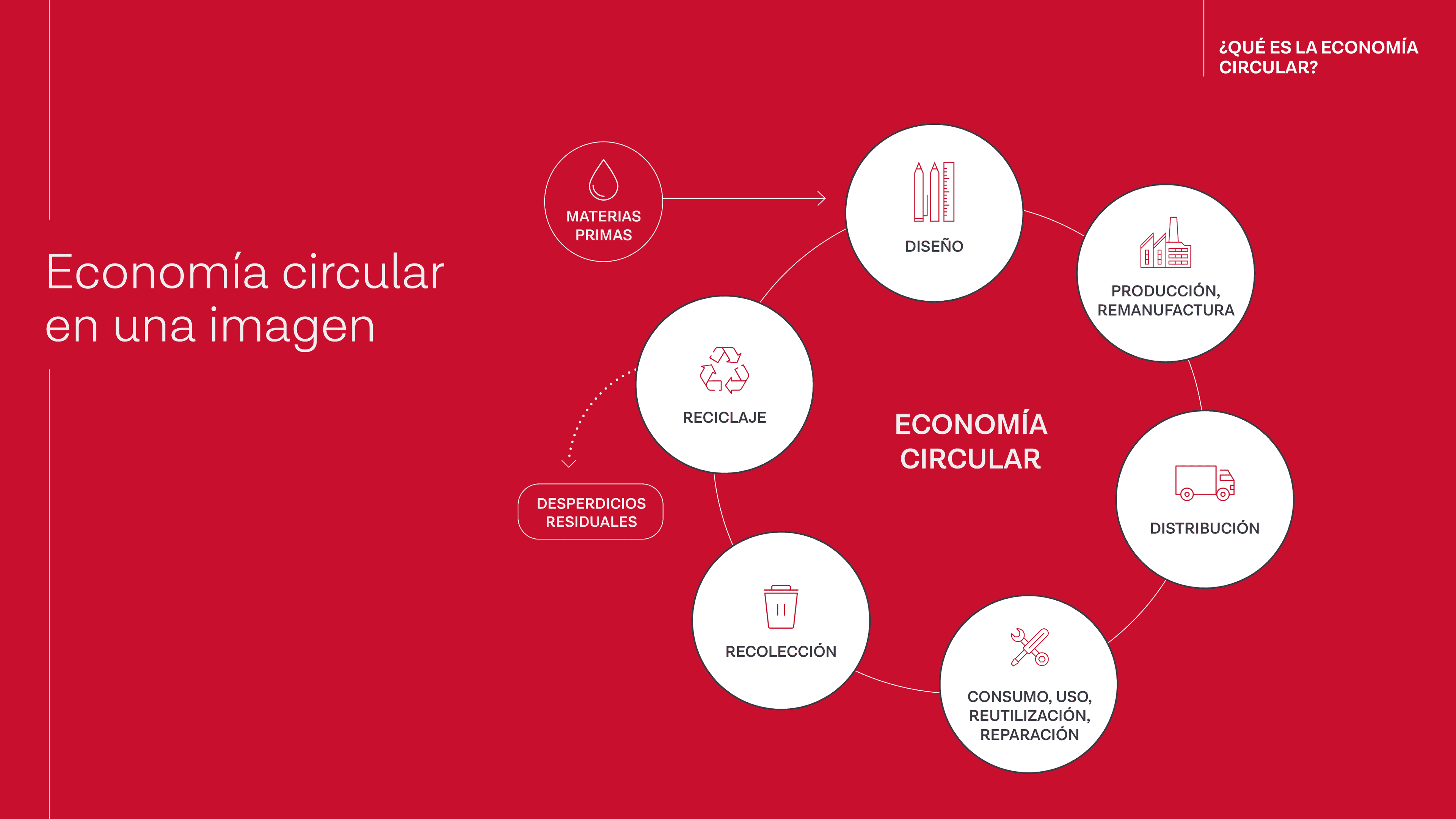Knowledge pill 1: What is the circular economy?
14 Febrero - 2023
Defining the circular economy:
An extended definition of the circular economy based on the one proposed by the Ellen MacArthur Foundation could be the following: an attractive alternative that seeks to redefine what growth is, with an emphasis on benefits for all of society. This involves decoupling economic activity from the consumption of finite resources and eliminating systemic waste from the design.
"The Circular economy is an attractive alternative that seeks to redefine what growth is, with an emphasis on benefits for all of society.." Ellen MacArthur Foundation.
Until now, traditional production models have assumed the generation of waste products and materials as an inevitable part of the production process. The novelty of the concept of the circular economy is that it proposes that the waste produced throughout the production process can generate value for the company when it is used again. This is precisely where the concept of “circularity” comes from: waste ceases to be waste and becomes another resource, reincorporating itself into the production process. That is, the residue from one production process can be transformed into the input of other production processes.
However, a distinction must be made between “circular economy” and “green economy”. It is true that the two terms speak of the use of energy, of the emissions produced as a result of production processes, and of natural resources as a starting point for the productive economy. But the main difference between the two is that the circular economy focuses on sustainable optimization and resources, while the green economy is more generic and addresses all natural processes.
Why is the circular economy important?
The European Union produces more than 2.5 billion tonnes of waste each year, although it is currently updating its waste management legislation to promote a shift towards the circular economy model with the aim of reducing the amount of waste generated. In the circular economy, when a product reaches the end of its useful life, its materials are kept within the economy whenever possible. In this way, the materials can be used productively over and over again, thus generating more value.
The European Union produces more than 2.5 billion tonnes of waste each year
This has many advantages: on the one hand, in the circular economy model, consumers receive more durable and innovative products that increase their quality of life and save them money in the long term; on the other hand, companies obtain an optimization of the use of resources, which can contribute to increased productivity and environmental sustainability.
And what about waste?
The aspirational objective of the circular economy is that there is no waste, since products and materials are reused and recycled indefinitely.
To make this possible, it is essential to recycle waste materials to “close the circle”. On the other hand, energy recovery from waste also plays an important role. Waste disposal should occur gradually and, where unavoidable, should be adequately controlled to be safe for both human health and the environment.
Therefore, and accepting that waste is not an option, prolonging and extending the useful life of the product while preserving the incorporated economic value is the most effective way to preserve resources. In this sense, we could say that the useful life of the products, rather than becoming infinite, becomes less finite.
So are we close to the circular economy being implemented on a large scale? At the moment, no, for at least three reasons:
- It requires cooperation with other companies to form an industrial symbiosis.
- It requires a production process that recovers the products once they have been discarded by consumers.
- Structural changes are necessary in the design of the product, so that the reuse of its components is planned from the first moment.
However, it is foreseeable that one day we will really make the economy circulate, as various governments are already giving strategic importance to this issue in the medium and long term. In fact, there are already some specific examples of companies that are applying the circular economy:
- HONEXT, which uses waste from paper manufacturing to make construction panels.
- BCIRCULAR, which comprehensively recovers wind turbine blades to make high-quality carbon fibres.
- THERMOWASTE, which converts solid urban waste into clean materials and recovers it in its entirety so that it has second use
And what can I do?
In conclusion, as citizens, we should overcome our reticence about the quality of products generated in the circular economy, as well as correctly manage waste that is produced in our everyday lives. It would also be good for businesses to introduce circularity into a product from the first stages of its conception and design. And of course, both citizens and businesses should be more actively involved in recycling and reusing products.
